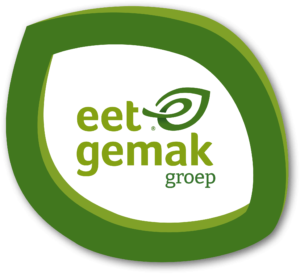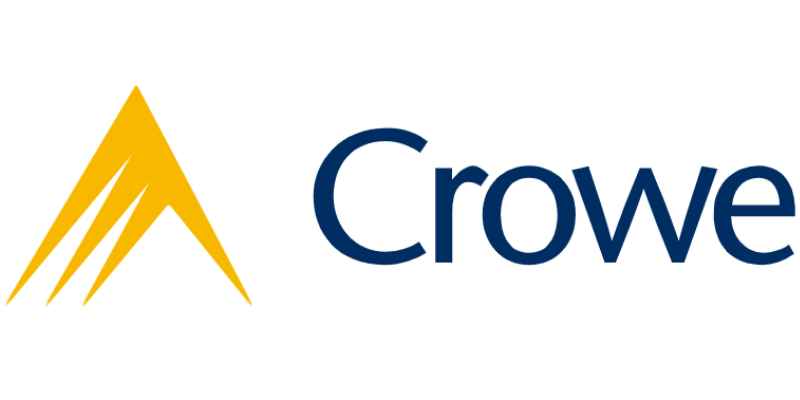Realizing growth is still the number one priority for many companies worldwide. In practice, however, organizations are finding it hard to achieve this objective. This is not the case with the Eetgemak Groep, however. In recent years, this organization has effortlessly expanded from 200 to 500 employees – while keeping staffing on Human Resources on the same level. How did digitization make this possible?
The Eetgemak Groep started out as a grocery store. This signature is still plain to see: freshness of ingredients is at the very heart of how the tailor-made dishes are prepared and offered. That’s quite a challenge when you know they turn out nearly 30,000 meals a day.
Facts about the Eetgemak Groep
Employees: 500
Consists of: 4 brands
Branches: several in the Netherlands
Production team: cooks, dieticians, production staff and food assistants
Keywords: fresh, tailor-made, delicious and sustainable
Eetgemak specializes in freshly prepared, nutritious, tailor-made dishes for clients who won’t or can’t cook for their guests or themselves. Target groups include care homes for the elderly, hospitals and psychiatric clinics, as well as hotels and restaurants facing staff shortages in their kitchens or serving large groups.
In addition, Eetgemak has several other divisions: FoodforCare provides balanced meals aimed at patient recovery, while Eetkomeet supplies healthy meals for childcare facilities. Last but not least, Vers voor Thuis offers tasty meals that consumers only need to heat up at home.
The need for meticulous planning
Since their customers need food every day, Eetgemak Groep’s production site operates on a continuous basis, including on weekends and holidays. They cook in a day shift as well as an evening/night shift. Needless to say, other personnel is also needed in addition to the kitchen crew. Additional staff include the reception, packaging and transportation departments. At the two large hospitals where they provide their services, they offer food and beverages throughout the day. You can imagine the challenge posed by accurately scheduling and setting up a thorough time registration system.
In the past, the HR department sometimes had discussions with employees about hours worked and leave. Nor was it always clear exactly how the roster worked. Daniël Wolffensperger, HR director at the Eetgemak Groep: “We used to work with planners for each location and would draft the time registration and planning in Excel sheets. These methods work just fine as long as you are a small business. In our case, however, it became a day job due to our substantial growth. We needed to work smarter. We asked ourselves the question: how can we optimize our processes in the shortest time possible? The answer was pretty clear: through digitization.”
Taking the hassle out of the process is crucial
You can take the hassle out of the process for staff by digitizing the scheduling process and time registration. First of all, the employees themselves: all they have to do is clock in and out. Our HR director reckons that this method helps you work more transparently, apart from anything else. “We chose Dyflexis’ workforce management software for our solution. It transparently records hours worked and days off, which makes everything nice and organized for employees.”
Eetgemak opted for appointing an Eetgemak department head or direct assistant to be responsible for scheduling. Teams in hospitals do have a dedicated planner, however. “After all, HR is unable do that themselves,” says Robin Dijkhuizen, HR consultant at the company. “There are many issues to consider, like production peaks. The departments themselves have the best overview of such matters.”
The approval of schedules and time registration remains with the HR department. Dijkhuizen: “After all, we are the ones who convert the registered hours into payrollable hours. Replacing the manual way with a digitized solution has made that process easier and less error-prone.”
The benefits of working with Dyflexis
Daniel Wolffensperger is very enthusiastic about the benefits Dyflexis technology offers the Eetgemak Groep. These benefits include:
Scalable: Dyflexis software easily grows along with the user. For example, the Eetgemak Groep can effortlessly connect a new customer to the solution.
Intuitive: The application is easy to use. Employees can quickly find information in the mobile app or on the desktop application.
API for HR and payroll software: BCS is linked to Dyflexis, significantly simplifying payroll administration.
Partnership: The Eetgemak Group sees Dyflexis as a supplier, but also as a partner. If complicated issues should arise, Dyflexis helps them find the right solution.
Innovative: Dyflexis software is evolving continuously. For example, the Eetgemak Groep regularly uses new, useful features for its users.
Advisory role: Dyflexis adopts a proactive advisory role. When HR-related laws and regulations change or new trends emerge, they notify clients, for example. In this way, the Eetgemak Groep immediately knows how they can respond to this with Dyflexis or how Dyflexis picks up on these changes.
Linking with HR and payroll software
The Eetgemak Groep’s planning and complete leave registration are kept in Dyflexis. Thanks to an API, Dyflexis is also linked to BCS’ HR and payroll software. All time registrations that have a monetary effect are read into BCS, simplifying a process that is extremely complex for the organization.
“We work in multiple industries and deal with four different CLAs,” Wolffensperger explains. “What’s more, we have ten different groups that receive irregularity allowances. The amount of these allowances depends on when an employee joined the company and on the terms of employment we have included in the contracts. And different arrangements apply to the on-call service.”
“Coupling Dyflexis with BCS makes all these complex processes a lot easier. We used it to match the variable portion of the salary with all the fixed salary components. The result? Accurate pay for every employee.”
In control
Wolffensperger cites help in realizing links to other applications by way of an example of the partnership with Dyflexis. This may look like a standard process, but it never turns out to be quite that simple. So, it is very convenient if, thanks to a partnership with your supplier, you can get the links sorted.
“One of the great side effects of this linkage is that we acquired a certain level of self-service.” The HR director is clearly very happy about this. The systematics for the payroll process changed recently. Where Dyflexis previously used to set up this process entirely, the Eetgemak Groep now makes its own changes.
“Before, we needed to send an email to make changes, but now we can set it up ourselves. Whereas at Dyflexis we influence and fine-tune allowances ourselves, at BCS we do the same at the salary component level. This gives us grip and control on the process, although a final review is still required just to check.”
What are the benefits of processing allowances yourself? “First of all, it simply saves us time. Reducing the dependency on human work increases reliability. A program does not usually make mistakes. You can’t say that about people – no matter how good their intentions may be.”
Beneftis of the Dyflexis-app
Asked about the benefits of working with Dyflexis per job level, Wolffensperger replies:
- “Our employees have detailed insight, they can see and review all their hours and days off. In this process, the clock system is an accurate way of recording; it makes everything transparent.”
- He praises the Dyflexis software for its ease of use for planners. “Planning is complex work, after all, and the tool allows you to create a planning for more people in less time.”
- “I also reckon that by linking Dyflexis with a payroll package, the Eetgemak Groep was able to grow from 200 to 500 employees while keeping the same staffing level on Human Resources. In other words: it is safe to say that Dyflexis has facilitated our growth.”
Open to new developments
Does the Eetgemak Groep already use all the functionalities Dyflexis offers? “No, I’m sure we could get even more out of it. We are definitely open to new developments, but due to acquisitions and strong growth, we are already dealing with a lot of change in the organization. That is why we do not want to change the way we work for the time being. Otherwise, you might not get everyone on board, which is not an issue at the moment. But who knows what the future may hold,” Wolffensperger concludes.







